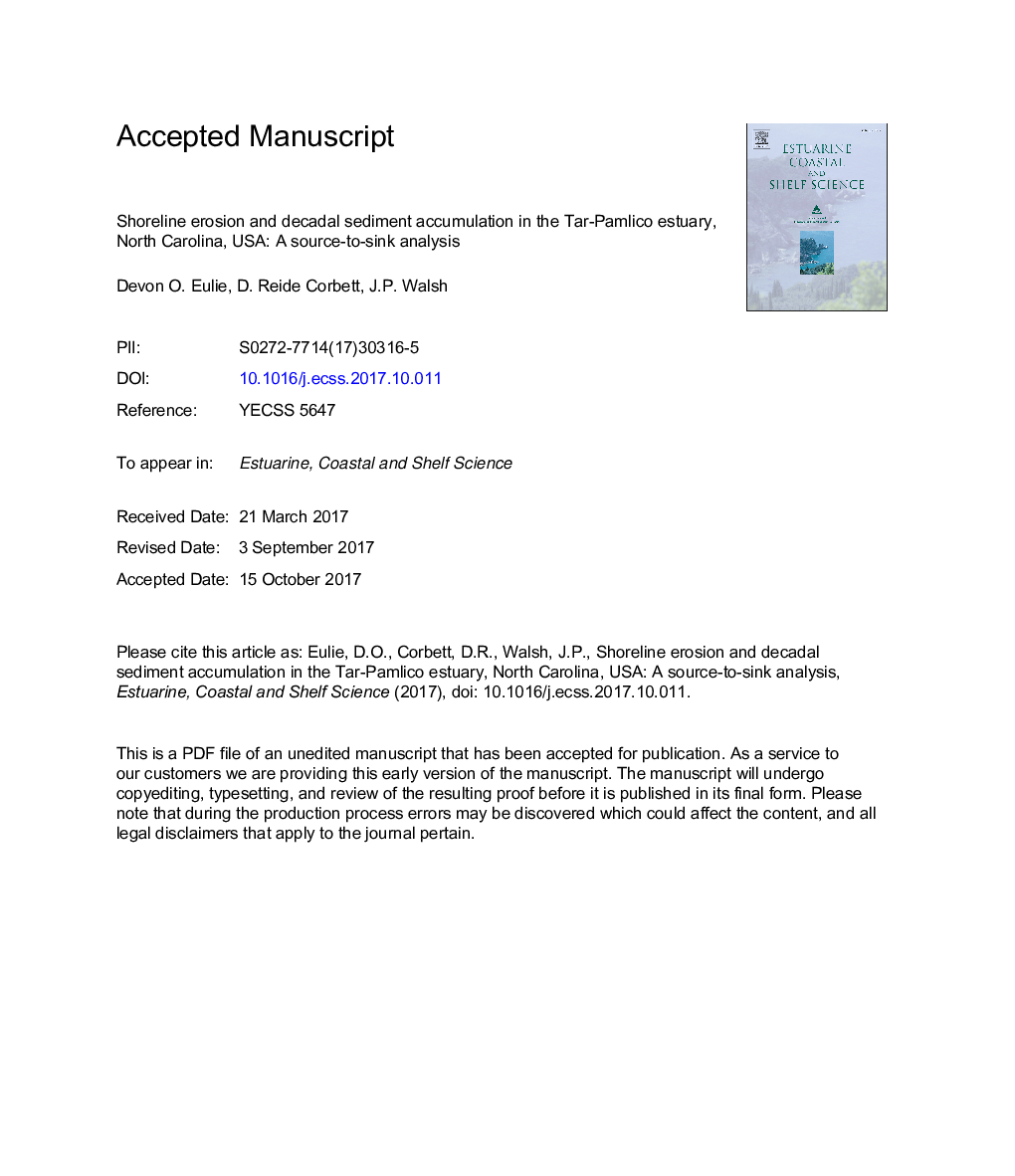| Article ID | Journal | Published Year | Pages | File Type |
|---|---|---|---|---|
| 8885018 | Estuarine, Coastal and Shelf Science | 2018 | 44 Pages |
Abstract
Estuaries contain vital habitats and it is important to understand how these areas respond to human activities and natural processes such as sea-level rise and wave attack. As estuarine shorelines erode or become modified with hard structures, there is potential for significantly altering the availability of sediment and the filling of coastal systems. This study used a source-to-sink approach and quantified rates of shoreline erosion in the Tar-Pamlico sub-estuary, a tributary of the larger Albemarle-Pamlico Estuarine System (APES). The average shoreline change rate (SCR) determined using an end-point method was â0.5 ± 0.9 m yrâ1 for the Tar-Pamlico. Incorporating bulk density estimates, this contributes 0.6 Ã 105 tons of fine sediment to the system annually, or after accounting for fluvial input, about 40% of the total sediment supply to the sub-estuary. The role of the Tar-Pamlico as a sink for these sediments was addressed using the radionuclide tracers 210Pb and 137Cs. Radionuclide activities and sediment accumulation rates identified several depositional regions, in particular in the middle of the estuary. Linear sediment accumulation rates ranged from 0.10 ± 0.02 to 0.38 ± 0.02 g cmâ2 yrâ1, and total storage of fine sediment in the system was 1.6 Ã 105 t yrâ1. It was not possible to confidently discern a change in the rate of shoreline erosion or seabed accumulation. A preliminary budget for fine sediments (grain-size <63 μm) was then calculated to compare erosional sources with sedimentary sinks. Almost all (â¼93.0%) of the fine sediment entering the system was accumulated and stored, while only about 7.0% was exported to Pamlico Sound.
Related Topics
Physical Sciences and Engineering
Earth and Planetary Sciences
Geology
Authors
Devon O. Eulie, D. Reide Corbett, J.P. Walsh,
